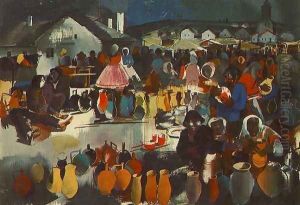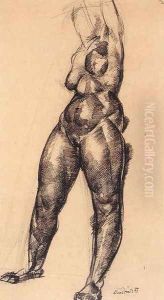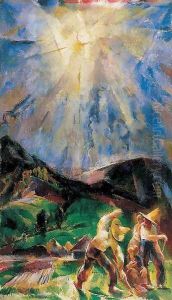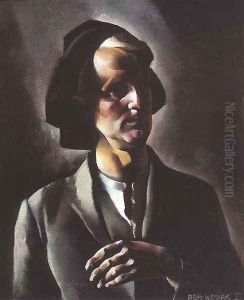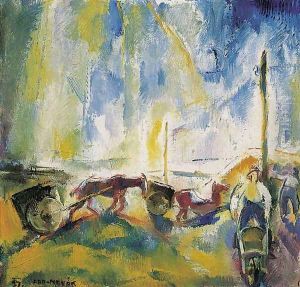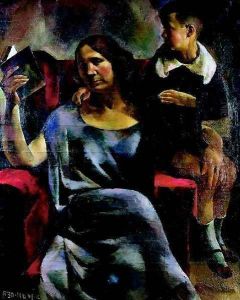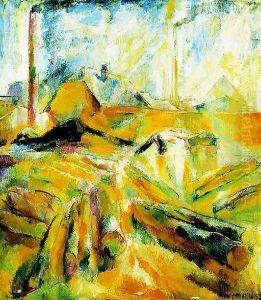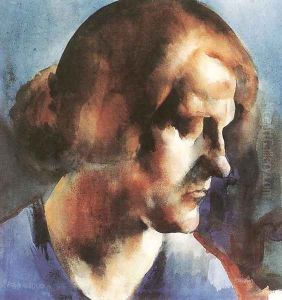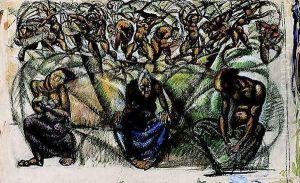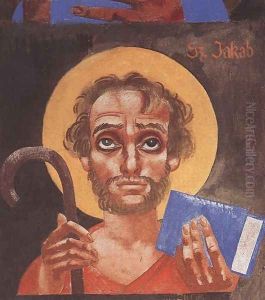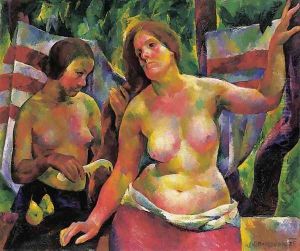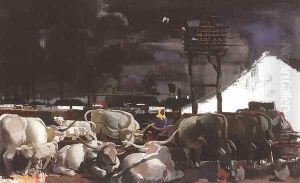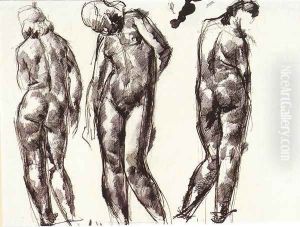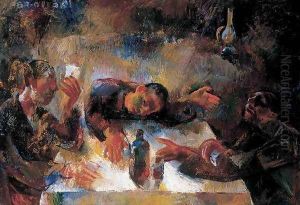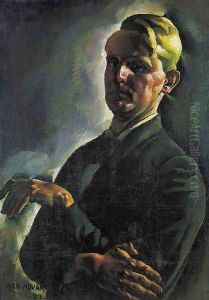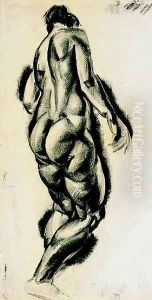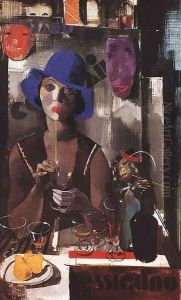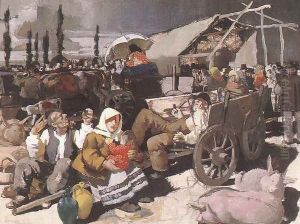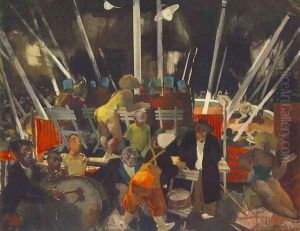Vilmos Aba-Novak Paintings
Vilmos Aba-Novák was a prominent Hungarian painter and graphic artist, known for his unique style that blended elements of Expressionism and Art Deco with traditional Hungarian motifs. Born on March 15, 1894, in Budapest, Hungary, Aba-Novák initially studied at the Hungarian Royal Drawing School from 1912 to 1914 and later continued his education at the College of Fine Arts in Budapest under the tutelage of István Réti and László Hegedűs.
Aba-Novák's early work was influenced by his experiences during World War I, where he served as a soldier. After the war, he traveled to Italy on a scholarship, which had a significant impact on his artistic development. He was particularly influenced by the frescoes and the vibrant art scene he encountered there. Upon his return to Hungary, Aba-Novák's art began to gain recognition; he received the Rome Prize, which allowed him to live in the Italian capital from 1928 to 1929.
Throughout the 1920s and 1930s, Aba-Novák's work evolved, demonstrating a keen interest in capturing the vitality of everyday life, Hungarian traditions, and the circus, which became a recurring theme in his paintings. His style was characterized by dynamic compositions, vivid colors, and a certain theatricality. He often depicted peasants, workers, and scenes from rural life, highlighting the cultural richness of Hungary.
Aba-Novák's success extended beyond Hungary. He participated in numerous international exhibitions, including the Venice Biennale in 1926 and 1934, where he won prizes for his work. In 1930, he was awarded the Grand Prix at the Brussels International Exhibition. His murals also received acclaim; one of his most notable projects was the fresco series for the University of Debrecen's main building, completed in the early 1930s.
Despite the political turmoil in Europe leading up to World War II, Aba-Novák continued to work and exhibit his art. However, his career was cut short by his untimely death on September 29, 1941. Today, Vilmos Aba-Novák is remembered as one of Hungary's most significant 20th-century artists, and his work continues to be celebrated for its energetic expression and cultural significance.


